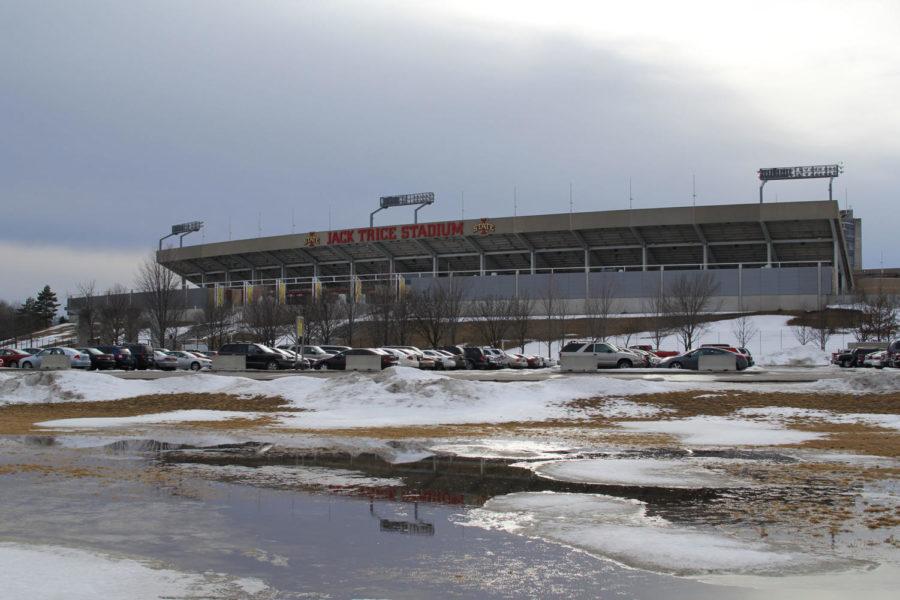Flooding predicted to not be a high concern in Ames this spring
February 21, 2014
With the fluctuating winter weather patterns that Iowa has had, flooding risks are not predicted to be of high concern.
“Things are going to kind of work against each other to reduce the amount of flooding,” said Kristie Franz, associate professor of geological and atmospheric sciences.
One factor that will lead to an increase in flooding risk for this spring is the frost depth. According to Franz, frost depth is the amount of soil that is currently frozen; the greater the frost depth, the harder it is for water to go permeate into the ground.
“Frost depth in Des Moines is around 30 inches, which is deeper than we have ever had in recent history,” said Jeff Zogg of the National Weather Service in Des Moines. With the frost so deep, the concern is that too much water will run off into Iowa streams and thus increase risk of flooding.
Conversely, a factor that will decrease flooding potential is the drought that central Iowa has experienced this fall and winter. While Feb. 20’s severe winter storm and other recent snowfalls have increased the snow cover, Zogg said that the water content in central Iowa is below average.
“Another thing to consider looking forward is that recently we have had a tendency to have a wet spring. Springs seem to be wetter than average which would increase the risk of flooding,” Zogg said.
With the unpredictability of heavy precipitation, Ames has prepared for the worst. Franz said a group of engineers from HDR Engineering Inc. recently conducted a study last year to assess solutions to flooding. Titled the Ames Flooding Mitigation Study, the engineers considered solutions like building reservoirs for runoff and diverting rivers to areas with less flooding risk.
Since Ames citizens don’t know what to expect for flooding with weather being so unpredictable, Zogg said that the best case scenario is for the water to be released into the rivers little by little. He said that the way to this is to “not have a lot of precipitation for the snowpack and melt it gradually.”
Worst case scenario, according to Franz, is that the snow from the winter storm accumulates and then is melted away all at once by some heavy warm rain. The danger is if the snow on the ground melts at the same time as the ice on the streams, it will cause an overflow.
While flooding will remain unpredictable, Zogg said, “we encourage people to look at the spring flooding outlook as more of a situational awareness and then stay tuned later for the seven day forecasts that the National Weather Service provides.”







